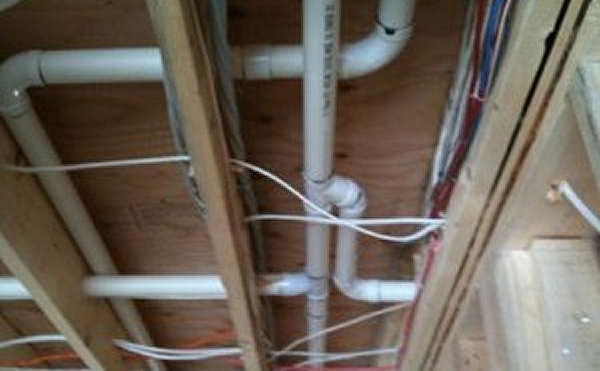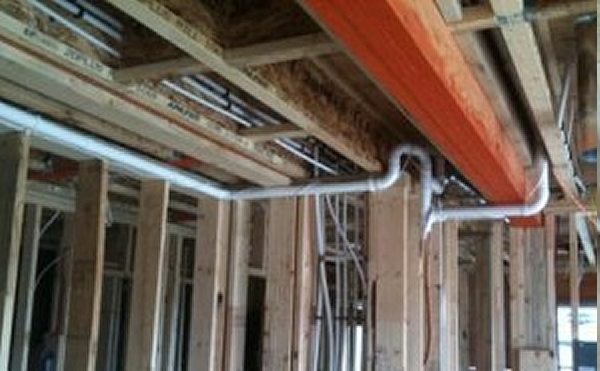The piping (or vacuum tubing)
This is the part of the system where workmanship matters the most. If the piping is not installed correctly, the rest doesn’t matter, this is the most expensive to fix as it usually requires drywall repair if not installed correctly.
Example of Correct Pipe Layout
Example of Bad Pipe Layout – Frequent blockages possible
Unfortunately the central vacuum piping in your home is not required to pass an inspection like every other sub trade that works on your home. If an inspection were done, unfortunately, most would fail. This is not because others don’t want to install it right, but because they have not been taught to do it properly.
Too often we have been called out to service other vacuum company’s installations and found that the vacuum piping was clogged due to improper installation. When we ask the customer if the problem had been re-occurring, on many occasions we found out that blockages occur continually, and they have given up on the original installer. When we inform the customer that the problem is in the way that the piping has been installed and if we reinstall the pipes properly the issues will go away, most customers are pleasantly surprised. When the problem is hidden inside the walls, most are not as eager to discover the problem.
If you are not absolutely certain that the person installing your pipes knows how to do it properly and are willing to guarantee that it will not block up from normal use, you need to reconsider who is doing your work.
The homeowner does not need an education on how to install central vacuum piping properly, we just want you to be aware that proper vacuum piping installation is critical to central vacuum system performance.
The layout of the piping inlet valves is also critical for ease of use and performance. The layout of the piping must be well thought out and designed with the customer in mind. While most installers just install the inlet valves to the points where it is easiest to run the piping, system layout should always consider the needs of the end user. Inlet placement should include among other things, reaching all areas, access to inlets after the home is occupied as well as furniture and other objects which may impede access to any corner or area which should be comfortably reachable from any given inlet valve.
Hose length must also be considered here as it is one of the most important components for ease of use of the vacuum. If the hose is too short, the piping becomes more expensive and the users find they are continually unplugging and re-plugging in the hose. If it is too long, it becomes bulky and difficult to handle. We have found that in residential use the optimal hose length is thirty feet.
OUR PIPING GUARANTEE: The piping that we install into your new or existing home will work properly or we will fix it free of charge!
Dry Vac versus Wet/Dry vac.
Purchasing a central vacuum that performs wet or dry pick up may seem like a good idea in theory, but in reality it is not. The problem does not lie with the canister itself, but with what happens inside the piping.
Sucking up any moisture into a Central vacuum system is a bad idea, because the moisture sticks to the inside of the solid vacuum piping and eventually clogs it up, ultimately to the point of being unusable. The only remedy to this problem is to completely remove the clogged pipes and re install new vacuum piping!


